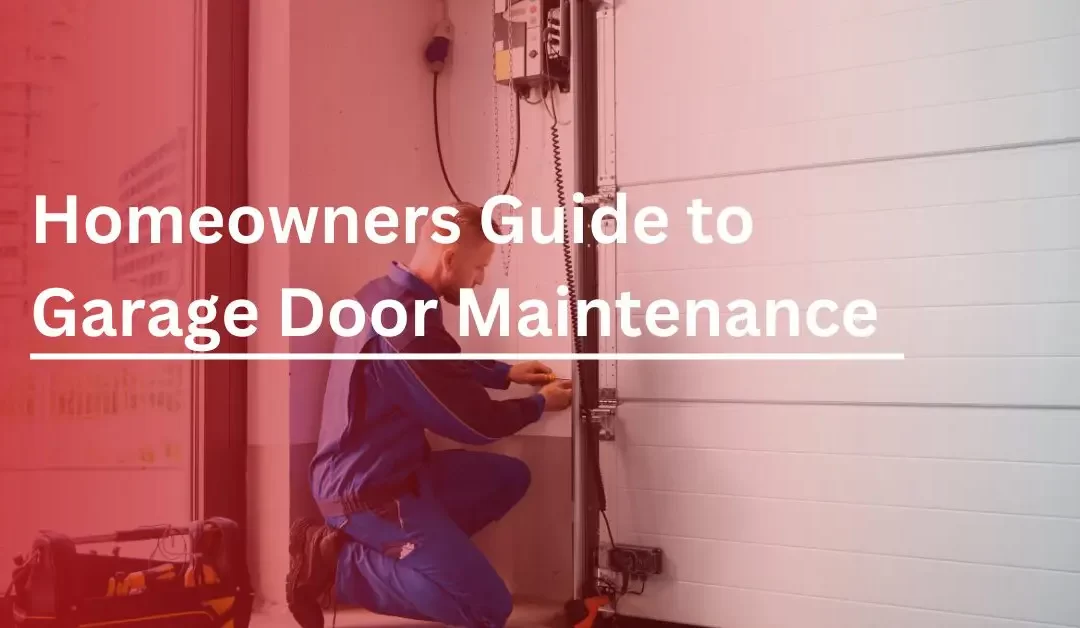A Homeowner’s Guide to Garage Door Maintenance
Garage door maintenance isn’t just about aesthetics—it’s essential for safety, energy efficiency, and prolonging the door’s lifespan. In this guide, we’ll cover a seasonal maintenance checklist, identify common warning signs of potential problems, and help you decide when a DIY fix is enough or when to call in a professional
Seasonal Checklist for Garage Door Maintenance
Regular checks each season can save you from costly repairs down the road. Here’s a detailed seasonal checklist to keep your garage door operating smoothly.
Lubrication

- Maintenance Tip:
Apply a high-quality, silicone-based lubricant to all moving components. Avoid using WD‑40 as it tends to evaporate quickly and isn’t as effective in long‑term lubrication. - Why It’s Important:
Over time, moving parts such as rollers, hinges, and springs can become dry and create friction. This not only causes noise but also accelerates wear and tear.
Balance Tests
- Why It’s Important:
A well-balanced garage door ensures smooth operation and reduces strain on the opener. An unbalanced door may indicate worn springs or misaligned tracks. - Maintenance Tip:
Disconnect the opener by pulling the release handle and slowly lift the door manually. It should remain in place when partially open. If it falls or is too heavy to hold, it’s time to have it professionally adjusted.
Weather‑Seal Inspection

- Why It’s Important:
The weather‑seal on your garage door prevents drafts, moisture, and pests from entering. Damaged seals can lead to higher energy costs and potential interior damage. - Maintenance Tip:
Inspect the bottom seal for cracks, tears, or signs of wear. Replace the seal if it’s no longer snug against the floor or shows visible damage.
Key Alerts for Garage Door Maintenance
Noticing early warning signs can prevent small issues from becoming major problems. Here are some signs to watch for:
Noisy Operation
- What to Look For:
Unusual squeaks, rattles, or grinding sounds when the door operates. These noises may indicate a need for lubrication or worn-out parts. - Action:
Try lubricating the moving parts. If the noise persists, it may be a sign of a more significant issue that needs professional attention.
Uneven Movement
- What to Look For:
If the door appears to be lifting unevenly or one side seems to lag, this could be due to an imbalance in the springs or misaligned tracks. - Action:
Perform a balance test. If the door still moves unevenly, schedule a service call to inspect and realign the tracks or replace the springs.
Dents and Visible Damage
- What to Look For:
Dents, scratches, or signs of physical impact can compromise the door’s structure and functionality. - Action:
Minor dents might be repaired with some DIY finesse, but significant damage could impact the door’s insulation or alignment. Consider professional repair if the damage is extensive.
DIY Fixes vs. When to Call a Pro
Deciding between a DIY repair and hiring a professional can be challenging. Here’s a guide to help you decide:
DIY Fixes
- Suitable For:
- Lubrication: Adding lubricant to rollers, hinges, and springs is a simple task you can do on your own.
- Weather‑Seal Replacement: Replacing a worn or damaged seal can usually be handled with basic tools and instructions.
- Minor Adjustments: Tightening loose hardware or cleaning the tracks falls within the realm of DIY maintenance.
- Tips for Success:
Always refer to your garage door’s manual for specific instructions. Wear safety gear and follow proper safety precautions, especially when working near springs and moving parts.
When to Call a Professional
- Signs You Need Expert Help:
- Persistent Noises: When lubrication doesn’t quiet the operation.
- Balance Issues: If the door fails the balance test, it may indicate a problem with the springs, which can be dangerous to handle without proper tools.
- Significant Damage: Deep dents or misaligned tracks often require professional assessment and repair.
- Electrical Issues: Problems with the garage door opener or sensor alignment should be handled by someone with experience in electrical repairs.
- Benefits of Hiring a Pro:
Professionals have the expertise and tools to safely manage high‑tension springs and complicated mechanisms. Investing in professional maintenance can extend the life of your garage door and prevent costly injuries or further damage.
By keeping up with these maintenance tasks and being aware of warning signs, you can ensure your garage door remains safe, efficient, and reliable. Remember, while some tasks are perfect for a weekend DIY project, others require the experienced hands of a professional.
Taking proactive steps now will save you both time and money—and keep your home secure for years to come.

